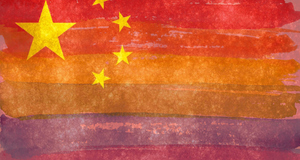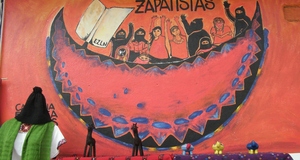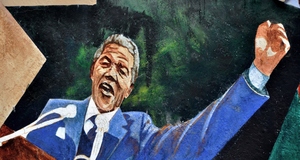Featured Article:The Rise of Gay Liberation in Toronto: From Vilification to Validation
By
2017, Vol. 9 No. 01 | pg. 1/2 | »
IN THIS ARTICLE
KEYWORDS
When it comes to social perceptions of sexuality, media portrayals cannot be ignored, and in most cases provide important insights into the ideologies present at a certain point in history. In terms of Toronto, in the late 1960s, mainstream media reported increasing concern over commercial and residential locations in the downtown area having a substantial gay presence (Warner, 2002). It was expressed with some fear that the increase of gay individuals could cause Toronto to be seen as the homosexual capital of Canada (Nash, 2005). With the growing presence of homosexuals within the public domain, the advocacy for contradictive and often negative views towards homosexuality emerged throughout society (Zimmerman, 2013). However, the presence of negative attitudes did little to stop the rise of the gay and lesbian movement from occurring across Canada. The rise of the Canadian rights gay movement in the 1960s, was closely connected to both practice and theory of social movements taking place throughout a number of other countries (Smith, 1999). It was in 1964 that the first formal lesbian and gay rights movement organization formed within Canada, under similar contexts which mirrored those within Australia, New Zealand, the United States, and Western Europe (Adam, 1999). In this way, the development of gay culture and the formation of gay rights organizations, increased solidary among the gay population of Toronto Canada. One of the first gay positive organization, Association for Social Knowledge (ASK), was formed in Canada in 1964 (McLeod, 1996). Shortly after its inception, ASK formed one of the first gay magazines, called ASK Newsletter, based in Vancouver, Canada (Warner, 2002). With new gay rights organizations beginning to form, the struggle for recognition spread across Canada, and in particular Toronto. Within a number of modern societies, the potential formation of social movements is primarily rooted in grounds for challenging institutions (Armstrong & Bernstein, 2008). As such, the state is an important element in supporting and establishing classifications and meanings as a way to allocate resources and promote rights of specific groups of individuals (Chorey, 2010). The gay liberation movement in Canada, during the late 1960s, began to bring equal rights challenges to the attention of the state (Balogh, 2015). On December 21st 1968, the omnibus bill (Bill C-150) was introduced by then Justice Minister Pierre Elliot Trudeau, which reformed the Canadian Criminal Code (Larocque, Chodos, Waterhouse & Blair, 2006).As a result, this bill liberalized Canadian law concerning such social issues as abortion, divorce, and homosexuality (Kimmel & Robinson, 2001). Finally, on May 14th 1969, homosexual acts between consenting adults was decriminalized in Canada with the implementation of the Criminal Law Amendment Act (Smith, 2005). During this time, the famous statement that there was “no place for the state in the bedrooms of the nation” was made by Trudeau (Rankin, 2000, p. 176). It was this statement which sparked hope of greater social acceptance of homosexuality. Furthermore, this opened the door to new possibilities of liberation among the gay and lesbian community within Canada. State policies surrounding sex, race, and class can be seen as methods of control and suppression. For example, through institutional arrangements of state, policy is debated and altered, resulting in the reorganization of a hierarchical order within society (Chorey, 2010). However, when it comes to the decriminalization of private homosexual activity, it caused public sexual activity to become more legitimately regulated according to law, and increased in intensity (Hier & Greenberg, 2010). Overall, in North America, the 1960s and early 1970s was a period of cultural, political, and social upheaval (Kallen, 1996). To properly understand activism, some attention should be directed to the contextual placement of movements, as well as their expansion and influence. Early movements have primarily been developed and contained within national borders, were individuals focused on issues within their own nation-states (Manalansan, 1995). With the growth of global interconnectedness, the ways in which groups interpret and constitute community boundaries, through political practice and formation, have dramatically changed (Tillen, 2011). Movements of resistance are now developed and organized at regional, national, global, and local levels (Teske & Tétreault, 2000). As such, the substantial gains made for gay and lesbian rights have commonly been traced to the 1969 Stonewall Riots in New York City (Landolt, 2008). It has been frequently stated that the Stonewall riots marked the start of the gay rights movement throughout a number of countries (Manalansan, 1995). Through the Stonewall riots, the formation of the Gay Liberation Front, among other groups emerged, which provided examples of the new types of gay organizations that were occurring throughout the world (Zimmerman, 2013). Following the Stonewall Riots, the formation of the gay liberation movement began in Canada (Kinsman & Gentile, 2010). However, similar to other movements that were taking place throughout the world, members of organizations in Canada disputed and were divided over a number of issues (Adam, 1999). This division can be seen substantially in terms of the differences present between issues concerning lesbians and those of gay men. Missing LesbiansResearch has shown that differences, whether it is based on class, race, age, sexuality, or gender, reflect a variety of experiences in political marginalization (Masson, 2006). Like other movements, identity was, and continues to be, a significant element in gay activism. As shown throughout the literature, identities are diverse and extensive and can often make predictions about an individual’s behaviour (Appiah, 2006). Gay activists in Toronto, employing alternative ideological frameworks, struggled to constitute a homosexual identity (Nash, 2005). It was through the conceptualizations of differences, that some lesbians were excluded from participating in the gay liberation movement (Martin, Hanson, & Fontaine, 2007). As can be seen in the case of lesbian visibility, within the early gay rights movement, collective identity is a significant factor in the mobilization of rights (Nardi & Schneider, 2013). During the late 1960s and the early 1980s, there was a slight association of gay social spaces, in what has come to be known today as the ‘gay village’ located in downtown Toronto in the Church and Wellesley area (Nash, 2005). Particularly, in the 1970s, the City of Toronto’s emerging gay neighbourhood was largely subjugated by gay men, leading to the increase awareness of the gay political movement (Nardi & Schneider, 2013). Gay men and their interests had dominated initial homosexual organizations in Toronto, causing the issues faced by lesbians to become overlooked (Nash, 2005). For example, one of the first political organizations for homosexuality emerged with concerns for gay men and their entrapment by police officers in Toronto’s gay establishments, public washrooms, and parks (Hawkes, 2007). The interests of largely gay, white, and middle-class, dominated the publicity associated with both lesbians and gays (Myers, 2013). Notably, the rights of gays and lesbians were often employed under an umbrella term, homosexual, used for a mixture of the groups seeking equality (Fraser & Naples, 2004). As such, issues facing lesbians were often placed under the same rhetoric as gay men. Similar to other countries, lesbians in Canada felt their issues and needs were subjected to subordination by the agenda of gay men’s rights (Podmore, 2006). Although there were some attempts by the political groups to incorporate lesbians in their construction, gay men and their interests, dominated Toronto’s gay movement structure for a large part of the 1970s (Smith, 1999). During this time, the presence of separate lesbian organizations in the area were hardly acknowledged when compared to their gay movement counterparts (Nardi & Schneider, 2013). This is of particular importance due in part to the fact that policy changes often reflect recognizing identity that is associated with specific groups of people. To that end, some lesbians chose to move into separate spheres to fight for their own advancements of rights, which were of particular importance to their own identities (Myers, 2013). In this way, similar to other social movements, gay liberation was rooted deeply in the existing gender relations between men and women that were present at that time (FitzGerald & Rayter, 2012). Since previous generations of women worked to challenge male domination, the failure of some lesbians to participate in the gay liberation movement is not surprising. The lesbian movement had distinctive political interests that were different from that of gay men, with lesbians debating that as women they occupy an alternative position within society compared to men (Nardi & Schneider, 2013). For example, in October of 1976, the formation of the Lesbian Organization of Toronto (LOOT) occurred, growing out of the disaffection with lesbo-phobic mainstream feminism and male centred gay-liberation taking place during this time (Murphy, 2013). This group was the first openly lesbian feminist group in Toronto, formed in order to increase the visibility of lesbians within the city and provide them with a safe space, and offering a number of services (Millward, 2015). Unfortunately, on May 1st, 1980, the centre closed as a result of a complexity of problems (Warner, 2002). Ultimately, lesbian life disappeared from the public view in Canada, where lesbian subcultures existed in the middle of social activities, but remained primarily hidden (Podmore, 2006). From the beginning, the gay rights movement focused on issues of defending the institutions of the gay male community such as bathhouses, which were not of the same concern for lesbians (Smith, 2005). Numerous women believed that the gay rights movement’s focus on discrimination and sexuality was not as relevant for lesbians as it was for gay men (FitzGerald & Rayter, 2012). This was due to the fact that gay men were specifically exposed to greater regulation and violence because of their lifestyle being more public (Kallen, 1996). In other words, their behaviour was more likely to be seen, or charged as an indictable offence, where male homosexual activity was seen as crimes against nature (Khayatt, 1992). Overall, in the gay liberation movement, the placement of lesbians was disputed throughout the 1960s and 1970s, a time at which gay liberation began to establish itself (Nardi & Schneider, 2013). With the local homosexual population in Toronto growing in visibility, since the late 1960s, the increasing likelihood of events becoming sensationalized and bringing unwelcomed attention by the public became apparent throughout the late 1970s (Kinsman & Gentile, 2010). With this is mind, the atmosphere in Canada, specifically in Toronto during the 1970s, became increasingly negative in terms of societal views of homosexuality. Gay Rights: The 1970sBy the mid-1970s, gay liberation began to have a significant effect on queer consciousness in a number of communities throughout Canada (Sears, 2005). Unfortunately, there was still much progress to be made, as challenging dominant heteronormative social attitudes was met with increasing difficulty (Warner, 2002). Heterosexism remained embedded not only within a number of social institutions but also specifically within Canadian courts and the judicial system (MacDougall, 2000). On August 21st, 1971 the ‘We Demand’ manifesto, which called for gay and lesbian equality, was presented at Parliament Hill in Ottawa (Opp & Walsh, 2010). Shortly after, on the 28th of August, the first gay public protest in Canada took place in Ottawa in which twelve gay and lesbians groups, and around 200 protesters marched with signs in support of the manifesto (Smith, 2005). The manifesto asked for the reform of the Criminal Code for sexual offences to end private sector job and housing discrimination against homosexuals (Warner, 2002). Moreover, this important gay rights document was given to the federal government and was instrumental in stopping the surveillance practices and policies targeting homosexuals (Opp & Walsh, 2010). Almost 2-years after the New York City Stonewall riots, which projected the modern United States gay liberation movement, Canadian citizens were experiencing their own movement towards the advancement of gay liberation (Smith, 1999). It was over the course of the 1970s and 1980s that gay and lesbian communities were building a solid foundation for the advancement of rights (Smith, 2005). Additionally, there were two organizing and specific political movements which emerged and caught the attention of activists: the gay liberation movement and the women’s movement (Nardi & Schneider, 2013). Such Canadian gay and lesbian groups as EGALE (equality for gays and lesbians everywhere) and Coalition, on behalf of their communities, were involved in a number of equality-seeking initiatives (Hier & Greenberg, 2010). However, as previously mentioned, with the lack of lesbian identities being acknowledged among the general public, gay men remained at the forefront of public and institutional debate (Podmore, 2006). Historically, the judiciary demonstrated illogical fears about sexuality, with concerns of spreading homosexuality being predominately strong in cases where children could be ‘exposed’ to homosexuality (Warner, 2002). Although homosexual acts between two consenting adults was legalized, there were numerous restrictions placed on the rights of gay men (Khayatt, 1992). For example, openly gay teachers were often fired from their jobs, given restrictions in the workplace, and often became the target of increased scrutiny (see the case of Doug Wilson). However, just when it seemed that progress and support was growing for the expansion of Human Rights for gay rights in the workplace, a significant setback occurred. With gay rights becoming more visible among the public, the murder of shoeshine boy Emanuel Jaques in 1977, lead to the reformation of the public’s view of associating homosexuals with child molestation (Townsend, 2012). The Murder of Emanuel JaquesThe core element in understanding the dynamics of social movements is based on the process of framing (Smith, 1999). The framing process has been viewed as an important aspect in the advancement of political opportunities and resources (Benford & Snow, 2000). Frames can be used not only to provide motivation for action, but reinforce identities (Dobrowolsky, 2008). Like other movements, frames have been instrumental in political opportunities and strategies employed within the gay rights movement (Masson, 2006). However, framing can have a series of consequences on the outcomes and processes of specific movements (Snow, 2004). This is of particular importance when it comes to gay rights as the main ways in which public opinions were influenced was through the framing process (Dobrowolsky, 2008). As such, when it comes to the decline in support and the increase in negative attention directed towards the gay liberation movement, opposition framing has occurred in a number of cases (Snow, 2004). Opposition framing not only affected participation in the gay rights movement but also caused the proliferation of negative stereotypes associated with homosexuality among wider society (Benford & Snow, 2000). It was during the late 1970s and the early 1980s when Toronto, Ontario, Canada became an area of enormous struggles for gay rights groups (Hier & Greenberg, 2010). A large majority of the difficulties faced were from moral entrepreneurial groups which focused their hatred on both the Ontario Human Rights Commission (in opposition to adding sexual orientation to the act), as well as towards homosexuality (Robinson, 2008). Mobilization of right-wing antigay groups used rhetoric and framing strategies to challenge gay rights organizations (Duggan, 1994). Specifically, the 1977 rape and murder of 12-year-old Emanuel Jaques on Younge Street, in downtown Toronto, was used as a type of ammunition for the emergence of numerous anti-gay marches by religious groups (Graydon, 2011). Some marches, in opposition to homosexuality, were formed and even requested re-introducing the death penalty against the homosexual perpetrators (Balogh, 2006). Emanuel Jaques, a local shoeshine boy who worked on Younge Street, in downtown Toronto, was kidnapped by four older male criminals in 1977 (FitzGerald & Rayter, 2012). Jaques was missing for a number of days, sparking panic, fear, and anger among citizens (Townsend, 2012). The four men who abducted Jaques did so by offering him money for work, leading him to an apartment room where he was violently raped, and ultimately murdered (Nash, 2005). The young boy’s body was discovered on the roof of a building on Younge Street in the core of downtown Toronto (Jackson & Persky, 1982). The four men were arrested after Saul Betesh, one of the murderers, turned himself into police and provided authorities with information about his accomplices (Martin, et al., 2007). Robert Kribs was the only one out of the four men who plead guilty, while Joseph Woods and Saul Betesh were both found guilty at trial (Koul, 2013). Since the men who were found to be responsible for the murder were homosexual, the vilification of homosexuality began to spread throughout society. The analysis of the imagery and representations employed by the media on this incident allows one to see how specific events caught the attention of the public and were used to frame homosexuality in a negative way. During the time of the Jacque’s murder, the city of Toronto was gripped with homophobia, which was, in part, caused by the mainstream media presenting the murder as being a result of homosexuality (Smith, 1999). In particular, newspaper reporters for the Toronto Star, the Globe and Mail, and in particular the Toronto Sun, often blamed the depraved homosexual as being anxious to recruit others, creating a new morality, and seeking the need for political power (Warner, 2002). As a result of the murder and subsequent media reports, citizens became enraged and scorn was directed towards all homosexuals as engaging in, and being responsible for deviant behaviour (Townsend, 2012). In the mind of the public, the longstanding debate on age of consent was seen as being connected to the rape and murder of the young boy (Balogh, 2006). During this time, gay men were referred to as child molesters, and common chants filled the streets, such as ‘kill the queers’ (Kinsman & Gentile, 1992). Discursive creation of homosexual males as murderers, perverts, and child molesters was solidified within Canada, due to the increased hysteria surrounding the murder of Jaques (Graydon, 2011). The response from the media influenced and increased the frenzy around homosexuality, causing long-lasting effects (Jackson & Persky, 1982). During this time, anti-gay sentiment spread across Toronto, causing the progress of gay rights to become temporarily stalled (Graydon, 2011). As such, greater concern was directed towards the presence of gays within city spaces (Hier & Greenberg, 2010). This incident, along with individual and institutional discriminatory attitudes, ultimately resulted in police officers engaging in, and validating, the use of violence against gay men (Hawkes, 2007). As a result, bars, sexually explicit venues, and pornography stores, which were viewed as being frequented by gay men, fell under increased scrutiny (Balogh, 2006). Toronto police, politicians, and media viewed the murder as a way to increase support for a ‘clean up’ of sex businesses and body-rub parlors located on Yonge Street (Graydon, 2011).Continued on Next Page » Suggested Reading from Inquiries Journal
Inquiries Journal provides undergraduate and graduate students around the world a platform for the wide dissemination of academic work over a range of core disciplines. Representing the work of students from hundreds of institutions around the globe, Inquiries Journal's large database of academic articles is completely free. Learn more | Blog | Submit Latest in History |


















